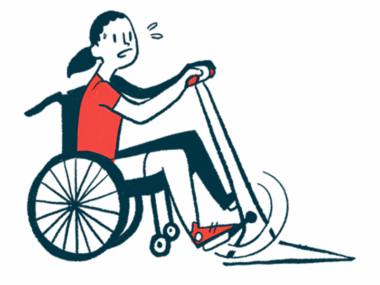Oral Ozanimod More Effective Than Avonex in Lowering Annual Relapses in MS Patients, Phase 3 Trial Finds
Written by |

Oral ozanimod is more effective at reducing the frequency of relapses than Avonex (interferon beta-1a) in patients with relapsing forms of multiple sclerosis (MS), and does so with reasonable safety, results of Phase 3 trial show.
These findings were described in the study, “Safety and efficacy of ozanimod versus interferon beta-1a in relapsing multiple sclerosis (SUNBEAM): a multicentre, randomised, minimum 12-month, phase 3 trial,” published in the journal The Lancet Neurology.
Ozanimod is a potential once-daily oral medication developed by Celgene and now under FDA review to treat relapsing MS patients; in Europe, a similar application aims to treat relapsing-remitting multiple sclerosis (RRMS).
Decisions by both the U.S. Food and Drug Administration and the European Medicines Agency (EMA) are expected in the first half of 2020.
An immunomodulator compound, ozanimod works by selectively binding to sphingosine 1-phosphate (S1PR1) and 5 (S1PR5) receptors, preventing immune cells from entering the brain and causing inflammation.
A previous Phase 2/3 trial called RADIANCE (NCT01628393) and its two-year extension study have shown that, compared to a placebo, ozanimod significantly reduced the number of lesions visible by magnetic resonance imaging (MRI), as well as the number of MS relapses experienced by RRMS patients.
Its use was also found to be generally safe and well-tolerated by study participants.
Investigators now report findings from the Phase 3 SUNBEAM trial (NCT02294058), which builds on data generated by the RADIANCE study. Specifically, SUNBEAM compared the safety and efficacy of ozanimod capsules to that of Avonex, an injectable formulation of interferon beta-1a marketed by Biogen, in relapsing MS patients — both those with RRMS and secondary progressive MS (SPMS).
The multicenter, randomized, and double-blind trial enrolled 1,346 relapsing MS patients between the ages of 18 and 55, recruited at 152 clinical sites spread across 20 countries. Study participants were randomly assigned to either ozanimod capsules (0.5 mg or 1.0 mg daily doses) or weekly intramuscular injections of Avonex (30 μg) for at least one year.
Its primary endpoint or goal was changes in patients’ annualized relapse rates (ARR, the number of MS relapses per year) during the treatment period. Secondary endpoints included the mean number of MRI lesions observed during the same period. Safety assessments were also performed in all participants.
“Compared with the Phase 2 RADIANCE study, the Phase 3 SUNBEAM study included a larger patient cohort, longer duration of treatment, and an active comparator already in use for relapsing multiple sclerosis. The SUNBEAM study also assessed the effect of ozanimod on disability progression, brain volume loss, cognitive measures, and quality of life,” the investigators wrote.
Key SUNBEAM data showed that ozanimod significantly reduced the number of annual MS relapses compared to Avonex at both daily doses: at 0.5 mg (adjusted ARR of 0.24 vs. 0.35 in the Avonex group) and at 1.0 mg (adjusted ARR of 0.18 vs. 0.35).
Ozanimod also significantly reduced the mean number of gadolinium-enhancing (GdE) MRI lesions (representing active MS lesions), and of T2-hyperintense MRI lesions (representing lesions caused largely by the loss of myelin) compared to Avonex, again at both daily doses: at 0.5 mg (0.29 vs. 0.43 for GdE lesions; 2.14 vs. 2.84 for T2 lesions) and at 1.0 mg (0.16 vs. 0.43 for GdE lesions; 1.47 vs. 2.84 for T2 lesions).
Regarding safety, fewer patients taking ozanimod (2.9% who were given the high dose, and 1.5% who received the lowest dose) interrupted treatment due to adverse events, compared to those given Avonex (3.6%).
The incidence of serious adverse events was low and identical in all treatment groups — 2.9% in patients treated with 1.0 mg of ozanimod, 3.5% in those given 0.5 mg of ozanimod, and 2.5% in those treated with Avonex.
No serious opportunistic infections were reported in any patient taking ozanimod.
“In SUNBEAM, treatment of participants with relapsing multiple sclerosis with ozanimod for at least 12 months more effectively reduced active disease based on relapses and MRI lesion counts compared with interferon beta-1a. Ozanimod 1.0 mg consistently provided numerically greater efficacy than ozanimod 0.5 mg. Both doses were well tolerated,” the researchers wrote.
Based on these results, the team concluded that the “SUNBEAM trial reinforces and expands the results from the RADIANCE Phase 2 trial and supports ozanimod as a potential oral treatment for patients with relapsing multiple sclerosis.”
“Additional clinical studies will assess the long-term effects of ozanimod on safety and disease outcomes,” they added.





